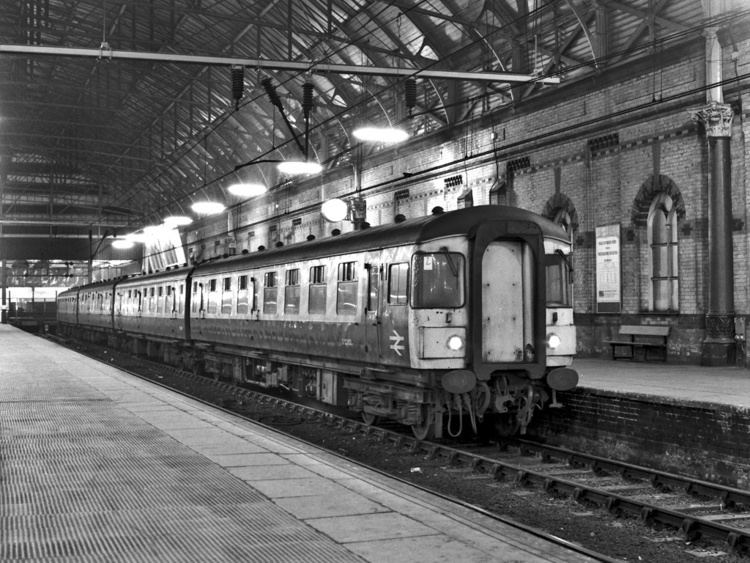In service 1963–1984 Number built 40 (Ten 4-car units) Formation DMBSL-TCK-TSL[RB]-DMSK | Number scrapped All | |
 | ||
Capacity 24 First class, 176 Second class seats (units with buffet 32 second class less) | ||
The Class 123 was a design of Diesel Multiple Unit built for British Rail in 1963. They were built by British Rail at Swindon Works, and designed like all Swindon units as inter-city sets. Ten of the four-car sets were built and introduced in 1963. The units bear a visible similarity to the British Rail Class 309; however, there is no 'relation' here as the two types were built by different manufacturers for different markets.
Swindon-built DMUs, including the Class 123 and 124, had a structure and internal construction with much more in common with BR coaching stock (British Rail Mark 1) than they do with many DMU classes. The carriage underframes were longer (Mk1 standard main-line 63 ft 6 in (19.35 m) frames, vs the 57 ft 0 in (17.37 m) frames common to most 1st generation DMUs) and the units were provided with Mk1-style "Pullman" gangways instead of the "British Standard Gangways" fitted to most contemporary DMUs of the period. It was also unusual for a first-generation DMU to sport a front end gangway. None of these units survive today.
Further Use
One of the buffet cars, 59831 was rebuilt as a Class 309 AC EMU griddle car, and renumbered 69108. It replaced a griddle car that had developed an underframe fault
